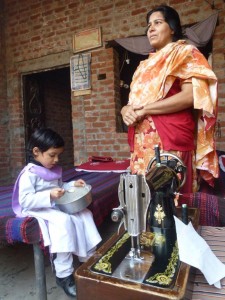
The Changing Village Economy
Certain of Hoshyar’s sponsored schools are located far from cities or towns, like those in Mansehra district in the northwest of Pakistan. Others, like Al-Hamd in Baagarian village, are on the edge of a major city. Both types of villages are undergoing change as their economies grow and develop. These changes are having a big impact on occupations, incomes, and decisions about expenditures. All of this makes education more desirable and yet, for some, more out of reach.

In the plains of the Punjab, villagers traditionally worked as agriculturalists. Land was owned by large landlords, and peasants provided the labor and eked out a basic living. Although this economic pattern persists in many rural areas, land near cities like Lahore has become so valuable that it can no longer be devoted solely to agriculture. Residents of Baagarian see the fertile fields around the village shrinking as the land is sold off for development. With farming work scarce, villagers turn to unskilled jobs like carting loads. Many get jobs in construction. The more successful become shop owners or contractors. For those with education, including women, the urbanization of the village presents new possibilities for work in schools, businesses, and home-based industries.
In the remote villages of the Mansehra region, many residents used to tend herds of sheep and goats. They led a semi-nomadic life style, moving up and down the mountains with the seasons. Over the last few generations, they established a sedentary pattern of life. They now occupy permanent dwellings and work in trades or run small businesses. Those who have been educated enter the service sector or seek government employment. Women are found in professions like teaching, nursing, and office work.
